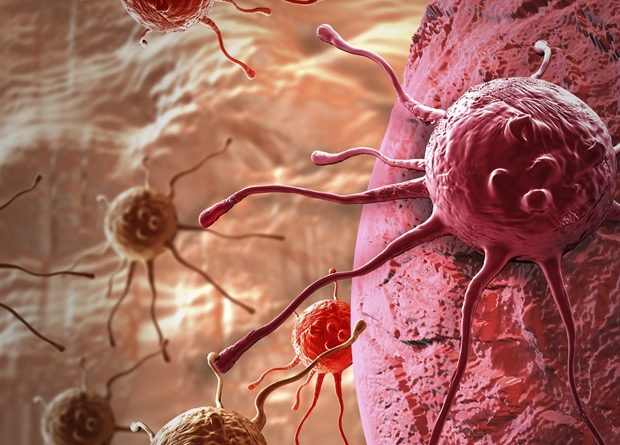Scientists uncover "genomic tug of war" that influences chemotherapy's effectiveness
 Reviewed
ReviewedSome patients with myelodysplastic syndromes, like acute myeloid leukemia, benefit from a chemotherapy drug called decitabine that stunts cancer growth. But many others are resistant to decatibine's effects or become resistant over time. Wilmot Cancer Institute researchers have uncovered a "genomic tug of war" in animal studies that could influence how well certain patients-;or certain cancers-;respond to decitabine.
In a study published in the journal Development, Wilmot investigators found that decitabine causes different regions of DNA to engage in a tug of war for a gene activator, called H2A.Z. If too little of this gene activator is around, gene expression grinds to a halt, causing cells to die. However, many types of cancer have very high levels of H2A.Z, which may help them overcome this decitabine-induced tug of war, allowing the cancer to grow.
"Two years ago, we published a paper where we identified different subtypes of breast cancer based on the amount of H2A.Z in tumors," said Patrick Murphy, PhD, assistant professor of Biomedical Genetics and Biology at the University of Rochester Medical Center and member of Wilmot's Genetics, Epigenetics, and Metabolism program, who led the studies. "If our findings bear out in humans, we may be able to classify patients based on how much H2A.Z is in their tumor, and then decide whether or not this therapy is going to be more or less effective. So it could eventually be used alongside personalized medicine diagnostics."
H2A.Z is a histone-;a class of proteins that DNA wraps around. Different types of histones spool the DNA more tightly, keeping it protected, or loosely, allowing the DNA to be read and turned into proteins that carry out the many functions of a cell.
H2A.Z binds DNA loosely, helping to turn on nearby genes. For a long time, it was believed to only bind to regions of DNA that contain the code for proteins. However, Murphy and postdoctoral associate Fanju Meng, PhD, discovered that H2A.Z also binds to non-coding "junk DNA" in zebrafish.
That was when we first started wondering, maybe it's not doing what we think it's doing, or maybe it's doing something extra. We always thought of H2A.Z as a factor that goes to genes and helps turn them on. So when we started seeing it at different places, we started asking more questions."
Patrick Murphy, PhD, Assistant Professor of Biomedical Genetics and Biology, University of Rochester Medical Center
Research dating back to the early 2000's has hinted at a murky link between H2A.Z and decitabine. More recent studies also show that decitabine can turn on portions of non-coding "junk DNA," but those studies stopped short of explaining exactly how that happens.
Funded in part by a pilot award from URMC's Environmental Health Science Center, Murphy and Meng tested the connection between decitabine and H2A.Z using zebrafish embryos. Treating the embryos with decitabine drew H2A.Z toward non-coding regions of DNA, reactivating them, and away from coding DNA, which curtailed gene expression, killed cells, and stunted embryo growth. In embryos that expressed high levels of H2A.Z-;mimicking some cancers-;there was enough H2A.Z to bind at both coding and non-coding regions and gene expression and embryo development were normal.
The same effect was seen with a toxic chemical, called TDCIPP, which is widely used in flame retardants and pesticides and has been found in human urine and breastmilk. The toxin caused H2A.Z to shift from coding to non-coding DNA regions, reducing gene expression and disrupting embryo development. But embryos that overexpressed H2A.Z were able to overcome the tug of war and were protected from the negative effects of the toxin.
"These external stressors-;decitabine and TDCIPP-;hijack essential aspects of cellular machinery to cause cell death," said Murphy. "Our study identifies critical vulnerabilities which can be taken advantage of to improve future cancer therapeutics."
Further research is needed, however, to confirm that this mechanism also happens in humans and to figure out how junk DNA sequences are able to hijack H2A.Z. As a first step in that direction, Murphy and Meng will soon study this mechanism in mouse embryonic stem cells-;making the jump into mammals.
University of Rochester Medical Center
Meng, F. W., et al. (2023). Competition for H2A.Z underlies the developmental impacts of repetitive element de-repression. Development. doi.org/10.1242/dev.202338.
Posted in: Medical Research News | Medical Condition News
Tags: Acute Myeloid Leukemia, Breast Cancer, Cancer, Cell, Cell Death, Chemotherapy, Diagnostics, DNA, Embryo, Embryonic Stem Cells, Epigenetics, Gene, Gene Expression, Genes, Genetics, Genomic, Histones, Junk DNA, Leukemia, Medicine, Metabolism, Myelodysplastic Syndromes, Myeloid Leukemia, Pesticides, Research, RNA, Stem Cells, Technology, Therapeutics, Toxin, Tumor
